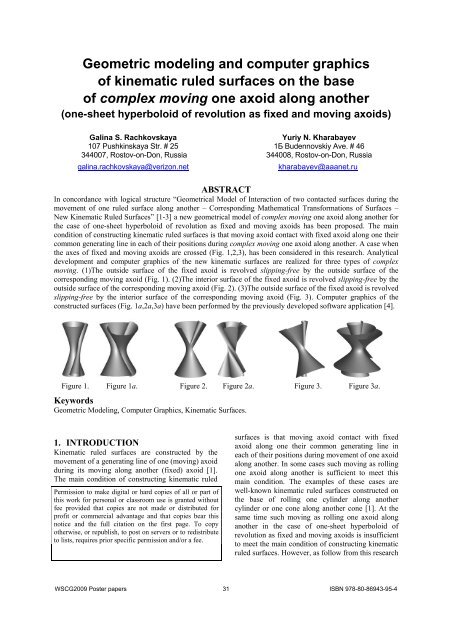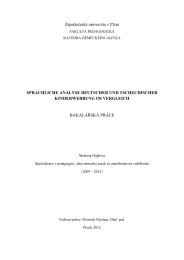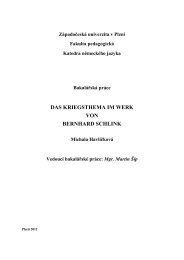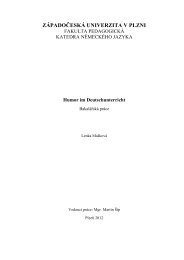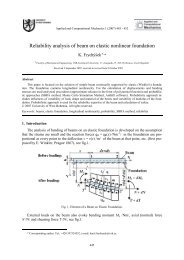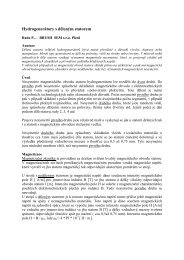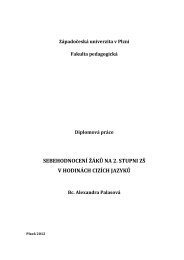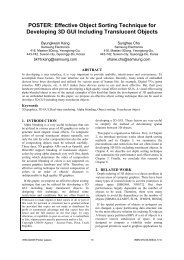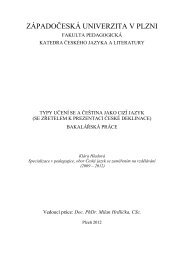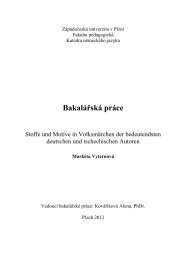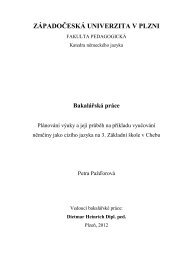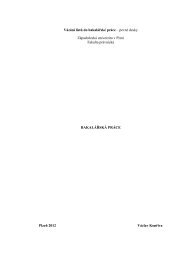Geometric modeling and computer graphics of kinematic ruled ...
Geometric modeling and computer graphics of kinematic ruled ...
Geometric modeling and computer graphics of kinematic ruled ...
Create successful ePaper yourself
Turn your PDF publications into a flip-book with our unique Google optimized e-Paper software.
<strong>Geometric</strong> <strong>modeling</strong> <strong>and</strong> <strong>computer</strong> <strong>graphics</strong><br />
<strong>of</strong> <strong>kinematic</strong> <strong>ruled</strong> surfaces on the base<br />
<strong>of</strong> complex moving one axoid along another<br />
(one-sheet hyperboloid <strong>of</strong> revolution as fixed <strong>and</strong> moving axoids)<br />
Galina S. Rachkovskaya<br />
107 Pushkinskaya Str. # 25<br />
344007, Rostov-on-Don, Russia<br />
galina.rachkovskaya@verizon.net<br />
Yuriy N. Kharabayev<br />
1Б Budennovskiy Ave. # 46<br />
344008, Rostov-on-Don, Russia<br />
kharabayev@aaanet.ru<br />
ABSTRACT<br />
In concordance with logical structure “<strong>Geometric</strong>al Model <strong>of</strong> Interaction <strong>of</strong> two contacted surfaces during the<br />
movement <strong>of</strong> one <strong>ruled</strong> surface along another – Corresponding Mathematical Transformations <strong>of</strong> Surfaces –<br />
New Kinematic Ruled Surfaces” [1-3] a new geometrical model <strong>of</strong> complex moving one axoid along another for<br />
the case <strong>of</strong> one-sheet hyperboloid <strong>of</strong> revolution as fixed <strong>and</strong> moving axoids has been proposed. The main<br />
condition <strong>of</strong> constructing <strong>kinematic</strong> <strong>ruled</strong> surfaces is that moving axoid contact with fixed axoid along one their<br />
common generating line in each <strong>of</strong> their positions during complex moving one axoid along another. A case when<br />
the axes <strong>of</strong> fixed <strong>and</strong> moving axoids are crossed (Fig. 1,2,3), has been considered in this research. Analytical<br />
development <strong>and</strong> <strong>computer</strong> <strong>graphics</strong> <strong>of</strong> the new <strong>kinematic</strong> surfaces are realized for three types <strong>of</strong> complex<br />
moving. (1)The outside surface <strong>of</strong> the fixed axoid is revolved slipping-free by the outside surface <strong>of</strong> the<br />
corresponding moving axoid (Fig. 1). (2)The interior surface <strong>of</strong> the fixed axoid is revolved slipping-free by the<br />
outside surface <strong>of</strong> the corresponding moving axoid (Fig. 2). (3)The outside surface <strong>of</strong> the fixed axoid is revolved<br />
slipping-free by the interior surface <strong>of</strong> the corresponding moving axoid (Fig. 3). Computer <strong>graphics</strong> <strong>of</strong> the<br />
constructed surfaces (Fig. 1a,2a,3a) have been performed by the previously developed s<strong>of</strong>tware application [4].<br />
Figure 1. Figure 1a. Figure 2. Figure 2a. Figure 3. Figure 3a.<br />
Keywords<br />
<strong>Geometric</strong> Modeling, Computer Graphics, Kinematic Surfaces.<br />
1. INTRODUCTION<br />
Kinematic <strong>ruled</strong> surfaces are constructed by the<br />
movement <strong>of</strong> a generating line <strong>of</strong> one (moving) axoid<br />
during its moving along another (fixed) axoid [1].<br />
The main condition <strong>of</strong> constructing <strong>kinematic</strong> <strong>ruled</strong><br />
Permission to make digital or hard copies <strong>of</strong> all or part <strong>of</strong><br />
this work for personal or classroom use is granted without<br />
fee provided that copies are not made or distributed for<br />
pr<strong>of</strong>it or commercial advantage <strong>and</strong> that copies bear this<br />
notice <strong>and</strong> the full citation on the first page. To copy<br />
otherwise, or republish, to post on servers or to redistribute<br />
to lists, requires prior specific permission <strong>and</strong>/or a fee.<br />
surfaces is that moving axoid contact with fixed<br />
axoid along one their common generating line in<br />
each <strong>of</strong> their positions during movement <strong>of</strong> one axoid<br />
along another. In some cases such moving as rolling<br />
one axoid along another is sufficient to meet this<br />
main condition. The examples <strong>of</strong> these cases are<br />
well-known <strong>kinematic</strong> <strong>ruled</strong> surfaces constructed on<br />
the base <strong>of</strong> rolling one cylinder along another<br />
cylinder or one cone along another cone [1]. At the<br />
same time such moving as rolling one axoid along<br />
another in the case <strong>of</strong> one-sheet hyperboloid <strong>of</strong><br />
revolution as fixed <strong>and</strong> moving axoids is insufficient<br />
to meet the main condition <strong>of</strong> constructing <strong>kinematic</strong><br />
<strong>ruled</strong> surfaces. However, as follow from this research<br />
WSCG2009 Poster papers 31 ISBN 978-80-86943-95-4
in this case task <strong>of</strong> constructing <strong>kinematic</strong> <strong>ruled</strong><br />
surfaces move to feasible solution on the base <strong>of</strong><br />
complex moving one axoid along another. Complex<br />
moving can be represented as a combination <strong>of</strong><br />
concerted movement such as rolling one axoid along<br />
another <strong>and</strong> translational movement <strong>of</strong> the moving<br />
axoid along the common generating line <strong>of</strong> both<br />
axoids The similar case <strong>of</strong> geometrical <strong>modeling</strong> <strong>of</strong><br />
complex moving one axoid along another on the<br />
example <strong>of</strong> moving a cone along a torse was<br />
described earlier [2, 3]. In that case complex moving<br />
was represented as a superposition <strong>of</strong> three<br />
interrelated elementary movements: rotational<br />
movement <strong>of</strong> the cone around its axis; turn <strong>of</strong> the<br />
cone axis; translational movement <strong>of</strong> the cone vertex<br />
along the torse edge-<strong>of</strong>-regression. Similar task <strong>of</strong><br />
constructing geometrical model <strong>of</strong> complex moving<br />
one-sheet hyperboloid <strong>of</strong> revolution along another<br />
one as the base for generating new <strong>kinematic</strong> <strong>ruled</strong><br />
surfaces was solved in this research.<br />
2. PRINCIPAL GEOMETRICAL<br />
MODEL OF COMPLEX MOVING<br />
One-sheet hyperboloid surface <strong>of</strong> revolution is a<br />
<strong>ruled</strong> surface, which can be constructed by the<br />
straight line rotation about the axis, if the straight<br />
line is crossed with the axis <strong>of</strong> rotation. A case <strong>of</strong><br />
two interacting axoids contacted along mutual ruling<br />
when the axoids’ axis are crossed (Fig. 1, 3, 5), has<br />
been considered in this research. In this case,<br />
complex moving one axoid along another can be<br />
represented as a superposition <strong>of</strong> three interrelated<br />
elementary movements: rotational movement <strong>of</strong> the<br />
moving axoid around its axis OZ in the moving<br />
coordinate system OXYZ connected with the moving<br />
axoid, rotational movement <strong>of</strong> the moving axoid axis<br />
OZ around the fixed axoid axis oz in the fixed<br />
coordinate system oxyz connected with the fixed<br />
axoid, <strong>and</strong> translational movement <strong>of</strong> the moving<br />
axoid along the common generating line <strong>of</strong> both<br />
axoids. The origin <strong>of</strong> the fixed coordinate system<br />
oxyz is located in the center <strong>of</strong> the waist circle <strong>of</strong> the<br />
fixed axoid. The origin <strong>of</strong> the moving coordinate<br />
system OXYZ is located in the center <strong>of</strong> the waist<br />
circle <strong>of</strong> the moving axoid.<br />
3. GEOMETRICAL MODEL №1<br />
(ONE AXOID LOCATE ON THE<br />
OUTSIDE OF ANOTHER AXOID)<br />
<strong>Geometric</strong>al model №1 is related to the case if the<br />
outside surface <strong>of</strong> the fixed axoid is revolved<br />
slipping-free by the outside surface <strong>of</strong> the<br />
corresponding moving axoid (Fig. 1). Model №1A is<br />
related to the case if moving axoid is the same as<br />
fixed axoid. Model №1B is related to the case <strong>of</strong> two<br />
contacted different axoids.<br />
3.1 <strong>Geometric</strong>al Model №1A<br />
<strong>Geometric</strong>al model №1A is related to the case if<br />
moving axoid (2) is the same as fixed axoid (1), i.e.<br />
a 1<br />
= a 2<br />
= a , c 1<br />
= c 2<br />
= c , where<br />
a1<br />
, c1<br />
– parameters <strong>of</strong> the fixed axoid,<br />
, c – parameters <strong>of</strong> the moving axoid.<br />
a2<br />
2<br />
Parameters a, c – parameters <strong>of</strong> the canonical<br />
equation <strong>of</strong> one-sheet hyperboloid surface <strong>of</strong><br />
revolution in the coordinate system oxyz:<br />
2 2 2<br />
x y z<br />
+ − = 1 , where a – radius <strong>of</strong> waist circle.<br />
2 2 2<br />
a a c<br />
Parametric equations <strong>of</strong> surface generated by one <strong>of</strong><br />
the ruling <strong>of</strong> the moving axoid in the system OXYZ:<br />
X = R( v cos( ϕ + α)<br />
− ( v −1)cos(<br />
ϕ −α))<br />
;<br />
Y = R( vsin(<br />
ϕ + α)<br />
− ( v −1)sin(<br />
ϕ −α))<br />
;<br />
Z = −h( 2v<br />
−1)<br />
,<br />
where R – radius <strong>of</strong> circular section <strong>of</strong> one-sheet<br />
hyperboloid <strong>of</strong> revolution at h distance from the<br />
2<br />
waist section: R = a 1+<br />
( h / c)<br />
; α = arctg ( h / с)<br />
;<br />
ϕ – current value <strong>of</strong> the angle <strong>of</strong> rotation <strong>of</strong> the<br />
moving axoid around its axis, v – input parameter.<br />
The equations <strong>of</strong> transition from the coordinate<br />
system OXYZ to the coordinate system oxyz:<br />
x = X cosϕ<br />
− ( Y cosθ<br />
− Z sinθ<br />
)sinϕ<br />
+ 2a<br />
cosϕ<br />
y = X sinϕ<br />
+ ( Y cosθ<br />
− Z sinθ<br />
) cosϕ<br />
+ 2a<br />
sinϕ<br />
z = Y sinθ + Z cosθ ,<br />
where θ = 2arctg(<br />
a / c)<br />
.<br />
The resulting parametric equations <strong>of</strong> the <strong>kinematic</strong><br />
<strong>ruled</strong> surface in the fixed coordinate system oxyz:<br />
x = ( A + 2a) cosϕ<br />
− ( B cosθ<br />
+ C sinθ<br />
)sin ϕ;<br />
y = ( A + 2a)sin<br />
ϕ + ( B cosθ<br />
+ C sinθ<br />
) cosϕ;<br />
z = B sinθ − C cosθ ,<br />
where<br />
A = R( v cos( ϕ + α ) − ( v −1)cos(<br />
ϕ −α))<br />
;<br />
B = R( v sin( ϕ + α ) − ( v −1)sin(<br />
ϕ − α )) ;<br />
C = h( 2v<br />
−1)<br />
.<br />
Pair <strong>of</strong> contacted axoids (Fig. 4)) <strong>and</strong> corresponding<br />
<strong>kinematic</strong> <strong>ruled</strong> surface (Fig. 4a) are shown below:<br />
Figure 4. Figure 4a.<br />
Figures <strong>of</strong> pairs <strong>of</strong> contacted axoids <strong>and</strong> <strong>kinematic</strong><br />
<strong>ruled</strong> surfaces have been constructed with the help <strong>of</strong><br />
the previously developed AMG (“ArtMathGraph”)<br />
s<strong>of</strong>tware application [3, 4].<br />
WSCG2009 Poster papers 32 ISBN 978-80-86943-95-4
3.2 <strong>Geometric</strong>al Model №1B<br />
<strong>Geometric</strong>al model №1B is related to the case <strong>of</strong> two<br />
different axoids ( a1 ≠ a 2<br />
, c1 ≠ c2<br />
). As it will be<br />
shown below parametric condition for two contacted<br />
2 2 2 2<br />
different axoids is а<br />
1<br />
+ с1<br />
= a2<br />
+ с2<br />
.<br />
This formula follows from model №1B (Fig. 5).<br />
A = R(<br />
v cos( ϕ + α ) − ( v −1)cos(<br />
ϕ −α))<br />
;<br />
B = R(<br />
v sin( ϕ + α ) − ( v −1)sin(<br />
ϕ − α )) ;<br />
C = h(2v<br />
−1)<br />
;<br />
n = a 2<br />
/ a 1<br />
; θ = arctg ( a / ) ( / ) ;<br />
1<br />
c1<br />
+ arctg a<br />
2<br />
c2<br />
2<br />
R = a 1+<br />
( h / c ; α = arctg h / с ) .<br />
2 2<br />
)<br />
(<br />
2<br />
Some matched pairs <strong>of</strong> contacted different axoids<br />
(Fig. 1, 6, 7) <strong>and</strong> corresponding generated <strong>kinematic</strong><br />
<strong>ruled</strong> surfaces (Fig. 1a, 6a, 7a) are shown.<br />
(Figure 6: a / a ) 2 / 1; Figure 7: ( a / a ) 2<br />
= 1/ 2 ).<br />
(<br />
1 2<br />
=<br />
1<br />
Figure 6. Figure 6a.<br />
Figure 5.<br />
In the developed geometrical model one axoid is<br />
revolved slipping-free by the another axoid. In this<br />
case any circle (waist circle <strong>and</strong> all others) <strong>of</strong> the<br />
fixed axoid (1) is revolved slipping-free by the<br />
corresponding circle <strong>of</strong> the moving axoid (2). Hence<br />
it follows that a relation length <strong>of</strong> each pairs <strong>of</strong><br />
contacted circles <strong>of</strong> contacted axoids must be equal.<br />
The formula <strong>of</strong> dependence R(l) was obtained on the<br />
base <strong>of</strong> model №1B (Fig. 5), where l – length <strong>of</strong> the<br />
segment <strong>of</strong> the common generating line <strong>of</strong> both<br />
axoids from the waist circle to the circle <strong>of</strong> radius R:<br />
2<br />
l<br />
R = a 1+<br />
.<br />
2 2<br />
a + c<br />
As stated above the relation<br />
a<br />
R2<br />
( l)<br />
=<br />
R1<br />
( l)<br />
a<br />
2<br />
1<br />
1+<br />
a<br />
1+<br />
a<br />
2<br />
2<br />
2<br />
1<br />
2<br />
l<br />
+ c<br />
2<br />
l<br />
+ c<br />
2<br />
2<br />
2<br />
1<br />
must be<br />
2 2 2 2<br />
It is possible if а + с = a + .<br />
1 1 2<br />
с2<br />
l<br />
-independent.<br />
The result parametric equations <strong>of</strong> the <strong>kinematic</strong><br />
<strong>ruled</strong> surface have been derived in the system oxyz:<br />
x = ( A + a1<br />
+ a2<br />
)cos( ϕ / n)<br />
−<br />
− ( B cosθ<br />
+ C sinθ<br />
)sin( ϕ / n);<br />
y = ( A + a1<br />
+ a2 )sin( ϕ / n)<br />
+<br />
+ ( B cosθ<br />
+ C sinθ<br />
)cos( ϕ / n);<br />
z = Bsinθ − C cosθ , where<br />
Figure 7. Figure 7a.<br />
4. GEOMETRICAL MODEL №2<br />
(ONE AXOID LOCATE IN THE<br />
INTERIOR OF ANOTHER AXOID)<br />
<strong>Geometric</strong>al model №2 <strong>of</strong> complex moving one axoid<br />
along another is related to the two cases:<br />
- the interior surface <strong>of</strong> the fixed axoid is revolved<br />
slipping-free by the outside surface <strong>of</strong> the<br />
corresponding moving axoid (model №2A),<br />
- the outside surface <strong>of</strong> the fixed axoid is revolved<br />
slipping-free by the interior surface <strong>of</strong> the<br />
corresponding moving axoid (model №2B).<br />
Using the geometric model №2 the result parametric<br />
equations <strong>of</strong> the <strong>kinematic</strong> <strong>ruled</strong> surface have been<br />
derived in the coordinate system oxyz:<br />
x = ( A+<br />
| a1<br />
− a2<br />
|) cos( ϕ / n)<br />
+<br />
+ ( B cosθ<br />
+ C sinθ<br />
) sin( ϕ / n);<br />
y = −( A+<br />
| a1<br />
− a2<br />
|) sin( ϕ / n)<br />
+<br />
+ ( B cosθ<br />
+ C sinθ<br />
) cos( ϕ / n);<br />
z = Bsinθ − C cosθ , where<br />
A = R( v cos( ϕ + α ) − ( v −1)cos(<br />
ϕ −α))<br />
;<br />
B = R( v sin( ϕ + α ) − ( v −1)sin(<br />
ϕ − α )) ;<br />
C = h( 2v<br />
−1)<br />
;<br />
n = a 2<br />
/ a 1<br />
; θ = arctg ( a / c ) − arctg ( a / ) | ;<br />
|<br />
1 1<br />
2<br />
c2<br />
α = arctg h с .<br />
2<br />
2<br />
1 ( h / c ;<br />
2<br />
)<br />
( /<br />
2<br />
)<br />
R = a +<br />
WSCG2009 Poster papers 33 ISBN 978-80-86943-95-4
4.1 <strong>Geometric</strong>al Model №2A<br />
For example, the <strong>kinematic</strong> <strong>ruled</strong> surfaces (Fig. 2a,<br />
8a) for matched pairs <strong>of</strong> contacted axoids<br />
( ( a ) are constructed. The axis <strong>of</strong> the<br />
1<br />
/ a2)<br />
= 6 /1<br />
fixed axoid (1) is located vertically on the Fig. 2, 8.<br />
Figure 8. Figure 8a.<br />
4.2 <strong>Geometric</strong>al Model №2B<br />
The types <strong>of</strong> <strong>kinematic</strong> <strong>ruled</strong> surfaces constructed on<br />
the base <strong>of</strong> the model №2A or model №2B are<br />
different (Fig. 8a or 9a). In this case the type <strong>of</strong><br />
surfaces is defined by the proportion ( a 1<br />
/ a . The<br />
2)<br />
surfaces shown in Fig. 2a, 8a are corresponded to the<br />
proportion ( a , <strong>and</strong> the surfaces shown in<br />
1<br />
/ a2)<br />
= 6 /1<br />
Fig. 3a, 9a are corresponded to the proportion<br />
( a . The axis <strong>of</strong> the fixed axoid (1) is<br />
1<br />
/ a2)<br />
= 1/ 6<br />
located vertically in Fig. 3, 9.<br />
Figure 9. Figure 9a.<br />
It is necessary to note that all described above<br />
matched pairs <strong>of</strong> contacted axoids fulfill geometric<br />
condition <strong>of</strong> overlap-free complex moving one axoid<br />
along another. However, fulfillment <strong>of</strong> this condition<br />
is optional for constructing <strong>kinematic</strong> <strong>ruled</strong> surfaces.<br />
5. MODEL OF COMPLEX MOVING<br />
WITH OVERLAPPING TWO<br />
CONTACTED AXOIDS<br />
The example <strong>of</strong> matched pair <strong>of</strong> axoids (Fig. 10) <strong>and</strong><br />
corresponding <strong>kinematic</strong> <strong>ruled</strong> surface (Fig. 10a) as<br />
the case <strong>of</strong> complex moving one axoid along another<br />
with overlapping two contacted axoids is shown.<br />
Figure 10.<br />
Figure 10a.<br />
At the first sight the shown above pair <strong>of</strong> axoids (Fig.<br />
10) looks like an “inappropriate pair” <strong>of</strong> contacted<br />
axoids. Nevertheless, this axoids pair was selected in<br />
2 2 2 2<br />
correspondence with condition а as<br />
1<br />
+ с1<br />
= a2<br />
+ с2<br />
well. The axial angle <strong>of</strong> the contacted axoids isθ :<br />
o<br />
θ = arctg( a1 / c1<br />
) + arctg(<br />
a2<br />
/ c2)<br />
= 102 .<br />
o<br />
In correspondence with value θ = 102 fixed <strong>and</strong><br />
moving axoids are located in Fig. 10.<br />
It should be emphasized, that the mathematical<br />
transformations as well as the resulting parametric<br />
equations <strong>of</strong> the <strong>kinematic</strong> <strong>ruled</strong> surfaces are<br />
independent <strong>of</strong> the type <strong>of</strong> complex moving - with or<br />
without overlapping two contacted axoids.<br />
6. CONCLUSIONS<br />
Thus, the proposed principal geometrical model <strong>of</strong><br />
complex moving one axoid along another for the case<br />
<strong>of</strong> one-sheet hyperboloid <strong>of</strong> revolution as fixed <strong>and</strong><br />
moving axoids has been assumed as a basis for<br />
analytical development <strong>of</strong> the new logical mean for<br />
constructing <strong>kinematic</strong> <strong>ruled</strong> surfaces. The main<br />
result <strong>of</strong> this analytical treatment in the combination<br />
with graphic ability <strong>of</strong> the previously developed<br />
s<strong>of</strong>tware application gives a good opportunity for<br />
<strong>computer</strong> search <strong>of</strong> desirable <strong>kinematic</strong> surfaces.<br />
REFERENCES<br />
[Kri06a] Krivoshapko, S.N., Ivanov, V.N., Khalabi, S.M.<br />
Analytical Surfaces. M, Nauka, 2006, 544 p.<br />
[Con04a] Rachkovskaya, G.S., Kharabayev, Yu.N., <strong>and</strong><br />
Rachkovskaya, N.S. The <strong>computer</strong> modelling <strong>of</strong><br />
<strong>kinematic</strong> linear surfaces (based on the complex<br />
moving a cone along a torse). Proceedings <strong>of</strong> the<br />
International Conference on Computing,<br />
Communications <strong>and</strong> Control Technologies (CCCT),<br />
Austin (Texas), USA. Vol.1. P. 107-111, 2004.<br />
[Con04a] Rachkovskaya, G.S., Kharabayev, Yu.N., <strong>and</strong><br />
Rachkovskaya, N.S. Computer <strong>graphics</strong> <strong>of</strong> <strong>kinematic</strong><br />
surfaces. Proceedings <strong>of</strong> the 12-th International<br />
Conference in Central Europe on Computer Graphics,<br />
Visualization <strong>and</strong> Computer Vision 2004, Plzen, Czech<br />
Republic, p.p.141-144.<br />
[Con07a] Rachkovskaya, G.S., Kharabayev, Yu.N., <strong>and</strong><br />
Rachkovskaya, N.S. Computer composition <strong>of</strong> the<br />
transformed classical surfaces as the ways <strong>and</strong> means<br />
<strong>of</strong> the construction <strong>of</strong> visual models <strong>of</strong> realistic objects<br />
(The new s<strong>of</strong>tware application “ArtMathGraph”)<br />
Proceedings <strong>of</strong> the 15-th International Conference in<br />
Central Europe on Computer Graphics, Visualization<br />
<strong>and</strong> Computer Vision 2007, Plzen, Czech Republic,<br />
p.p. 29-32.<br />
WSCG2009 Poster papers 34 ISBN 978-80-86943-95-4


